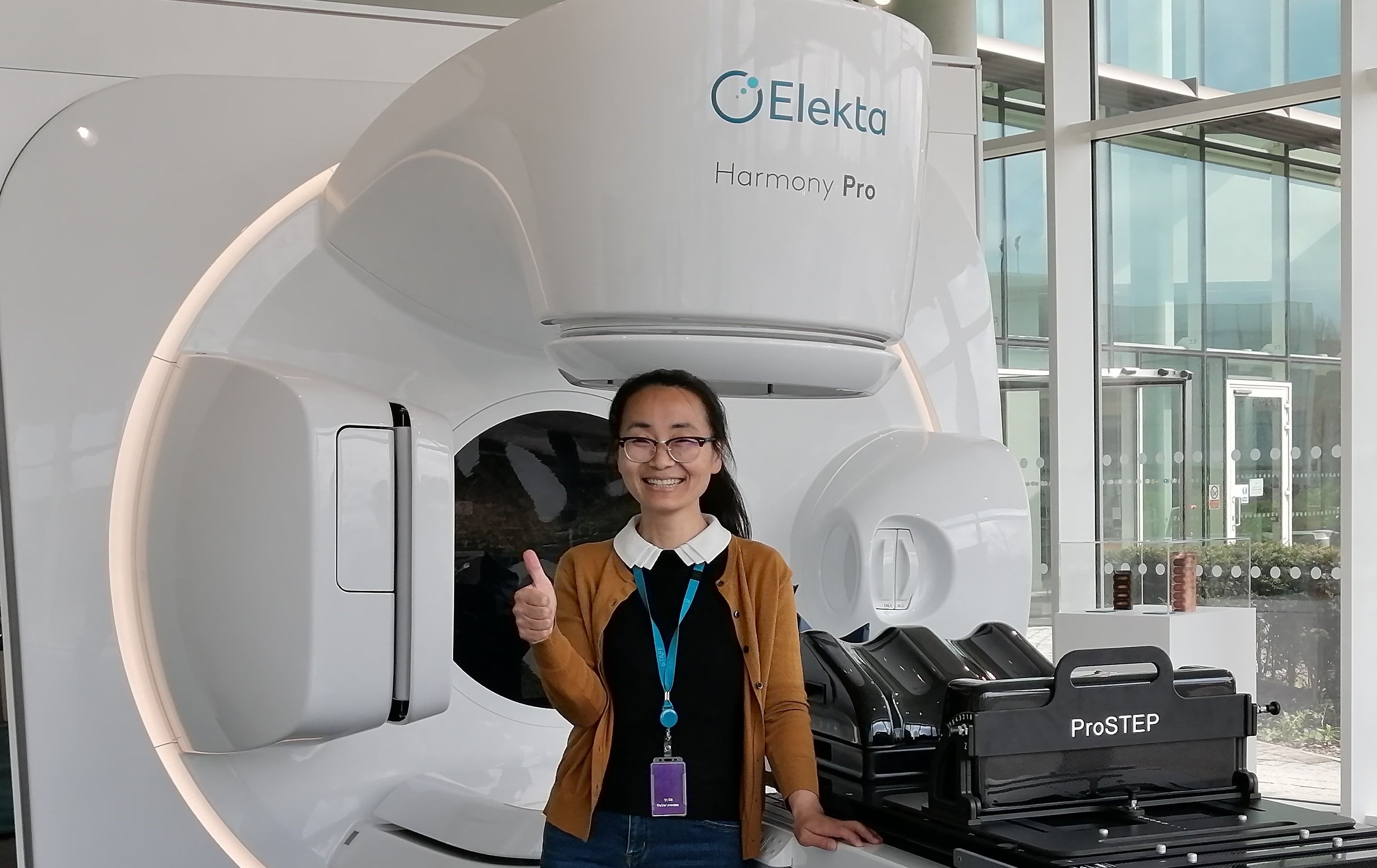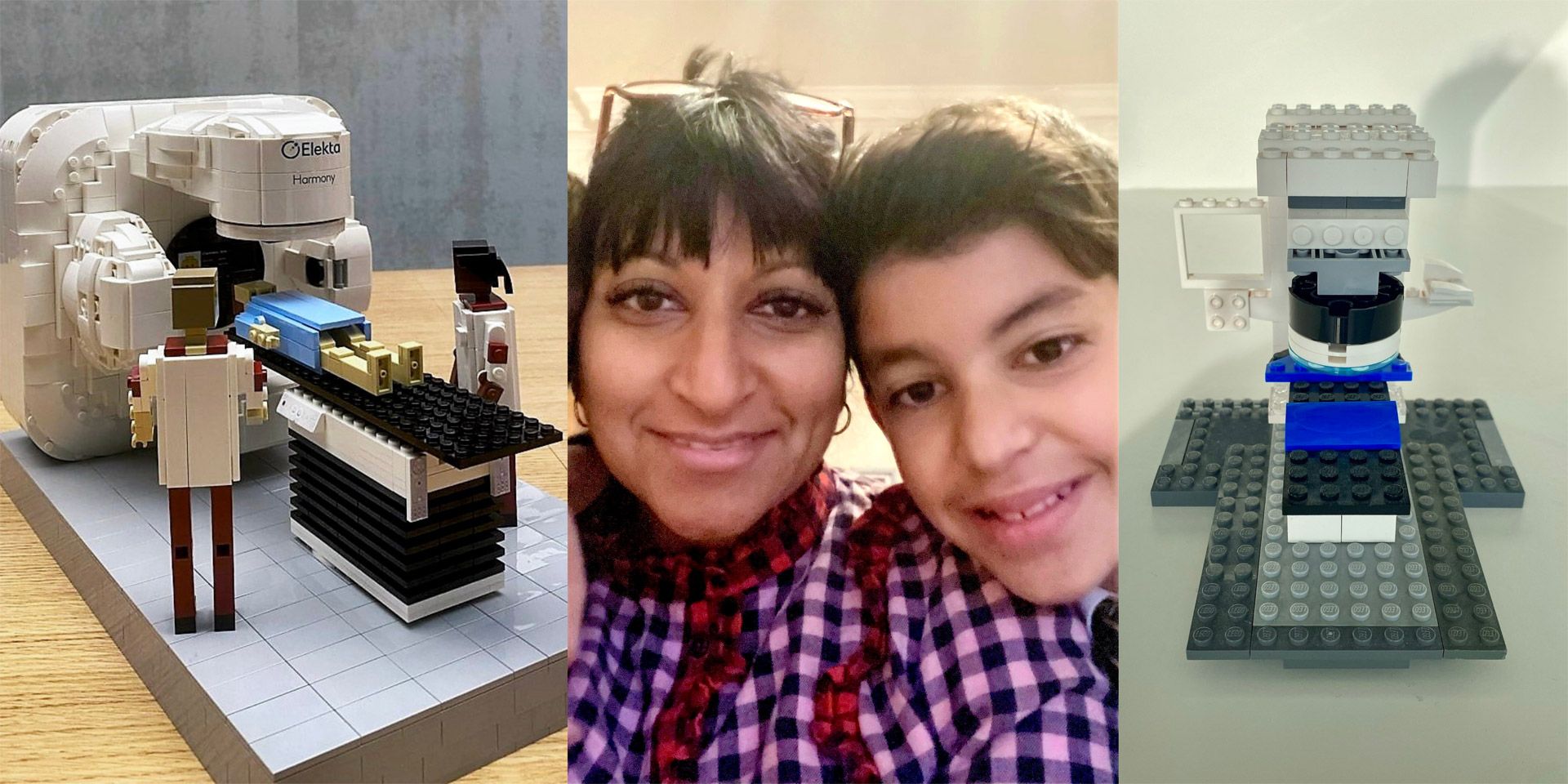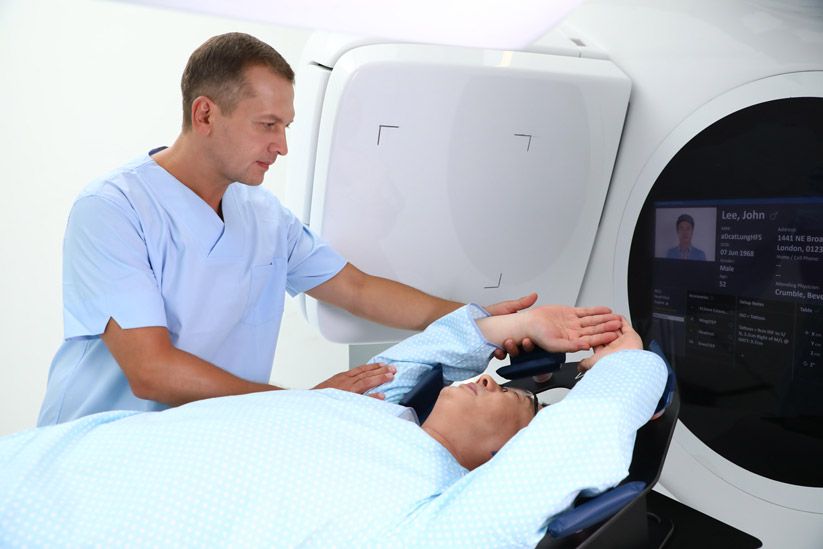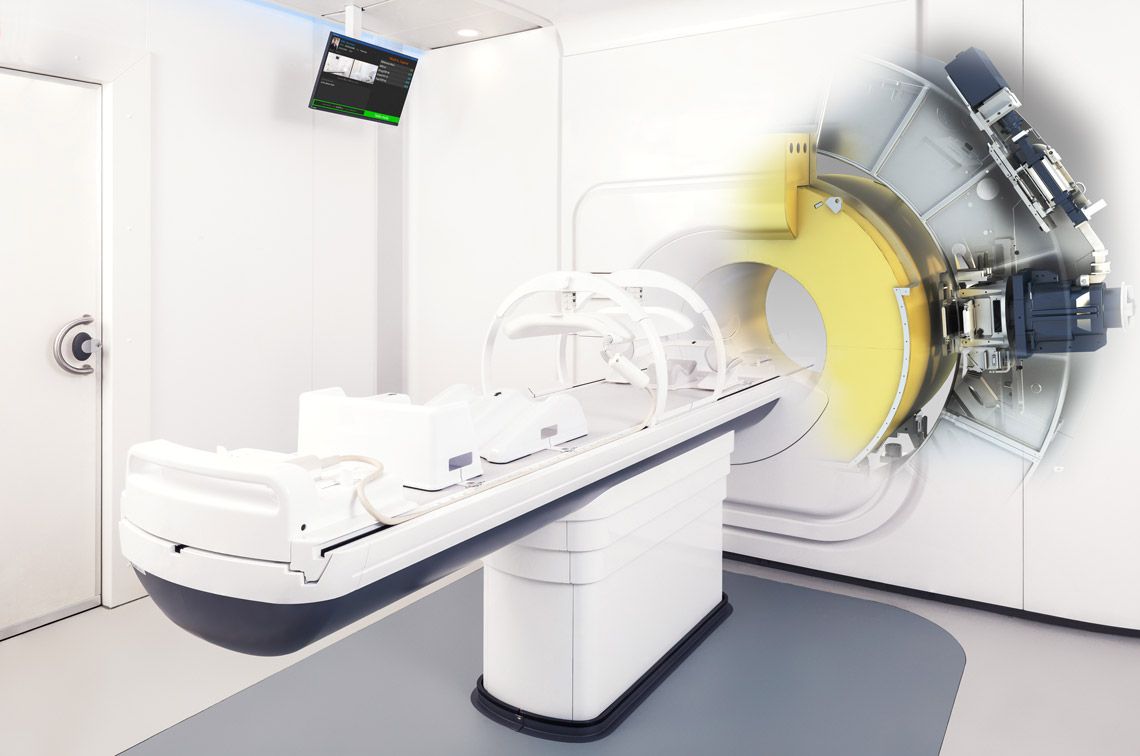Prioritizing the user experience a key aspect in Elekta product development
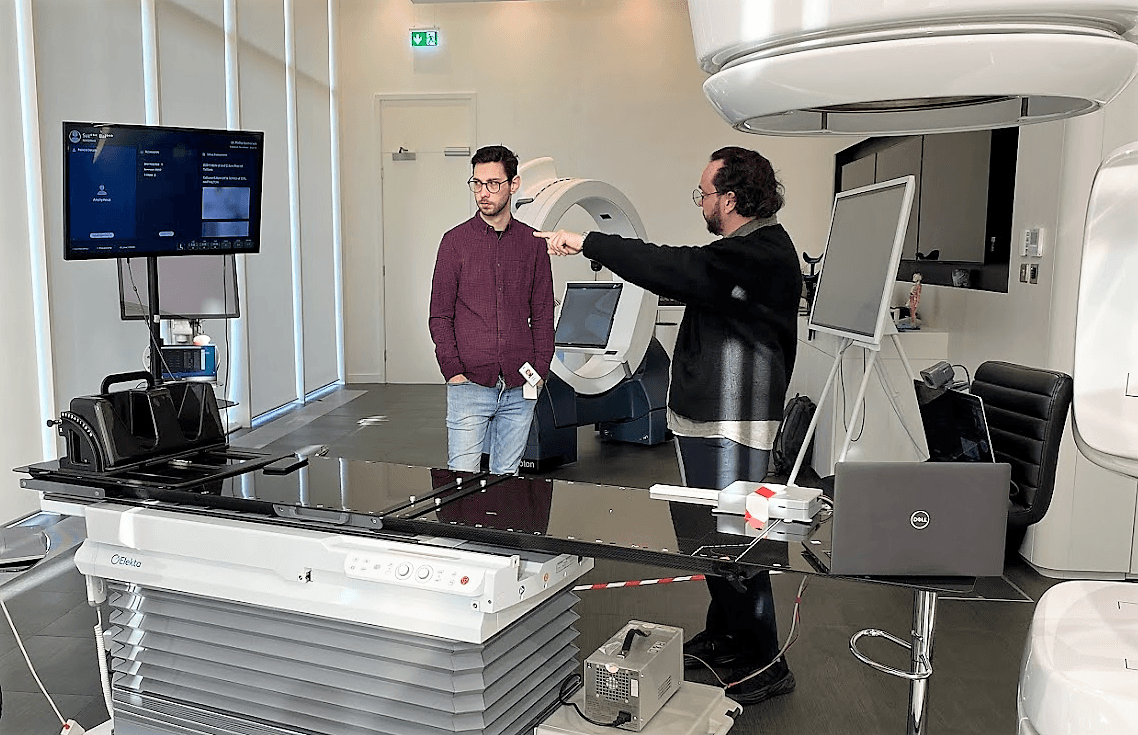
A well-designed solution empowers users to think less about the product and more about patients
Elekta’s User Experience Design (UXD) team is tasked with understanding user needs and translating them into viable commercial products. It entails an integrated and iterative approach of research, ideation, design, prototyping and testing.
“We define how our products look and behave – and more importantly – how they are experienced by our customers.”

“We define how our products look and behave and – more importantly – how they are experienced by our customers,” says Derek Olender, Vice President, Head of UXD. “This includes everything from the visual experience and the way buttons feel when pressed, to how easily users can navigate through the system. Together we work in partnership with product management and engineering to create products that are easy to adopt and operate.”
The UXD team is essential in ensuring that Elekta’s products express the company’s values. Its mission is to design solutions that empower caregivers, allowing them to spend less effort thinking about using the product, so they can maximize their attention to patient needs.
“We achieve this by embracing a user-centric design mindset that involves listening to and empathizing with customers and designing products that reduce cognitive burden, optimize safety, provide trust and assurances, and that support both clinical staff and patients,” Olender says.
Elekta’s UXD group is a diverse, multidisciplinary team that includes professionals engaged in visual, industrial and interaction design, usability, human factors engineering, psychology and programming. Leaders in their respective areas are Steve Hunt, Andrew Wolfenden, Bill Chen and Elina Koskenniemi.
Software Design: Steve Hunt, Senior Manager Product Design
Involved in digital product design for more than 25 years, Steve Hunt’s inspiration comes from the realization that when working digitally a product is never truly finished – it can always be upgraded, enhanced and iterated upon.

“This is phenomenally liberating as a designer,” he says. “I can work at a pace that hasn’t always been typical in the medical device space.”
The caveat is that product designers must strike a balance between the best outcome and introducing a solution at the earliest opportunity
“This is particularly true with medical devices and more so when designing software for the hardware that is entirely reliant on its successful operation to succeed,” Hunt says. “We make sure to nail down the complicated, procedural and necessary things first, but then allow iteration time for more subtle, less immediately tangible benefits that we can provide to end-users and patients.”
While the Digital Product Design team creates the look of Elekta software, the team – along with Industrial Design personnel – is also responsible for the feel of the products.
“We have been developing our user experience principles, building out a design system and moving forward toward a more consistent and familiar look and feel for our front-end designs.”
“We have been developing our user experience principles, building out a design system and moving forward toward a more consistent and familiar look and feel for our front-end designs,” Hunt explains. “And these foundational blocks enable us to work closer with product teams and get everything aligned quicker and progressing faster than ever before.”
He adds that if this close collaboration begins early in the product development process and happens frequently, the sense of openness and engagement can drive positive change for a product and introduce a profound sense of ownership from all involved.
“That’s something that more ‘siloed’ teams can’t quite manage,” Hunt remarks. “A perfect example of this collaborative approach is the recent launch of the company’s redesigned software network Elekta ONE. This network provides a unified software experience, all tied together with a consistent UX and design model. It represents a major step into the future for Elekta software, and it allows our customers to focus on patient care like never before.”
Industrial Design: Andrew Wolfenden, Manager Industrial Design
According to Andrew Wolfenden, industrial designers sit at the center of discussions ranging from theoretical concepts of materials, processes and engineering to expressive aspects of brand and form development and the humanistic requirements of ergonomics and usability.
“At Elekta, industrial design refers to the design of our hardware and treatment devices – not just the look of the machine, but also optimizing the way in which humans interact and interface with our systems,” he says. “And industrial design has a huge impact on patients: the way the patient feels when they walk into a treatment room, how the machine feels when they touch it and how they perceive the machine’s capability to effectively treat their condition.”
In today’s world, consumers cannot judge software and hardware experiences discretely.
“Our focus today is increasingly shaping the points in the user experience where hardware and software converge.”

“Elekta industrial designers don’t specialize only in aesthetic design of our hardware as they would have done historically,” Wolfenden says. “Our focus today is increasingly shaping the points in the user experience where hardware and software converge. The strength of a multi-disciplinary UXD function is that the collaboration of industrial design and UX designers requires each discipline to understand more about the other and intrinsically drives a conversation where the system is regarded as a whole – the way users see it.”
According to Wolfenden, a key theme of UXD’s work is to leverage early-stage user research to understand how it can develop designs that will unburden clinicians and help foster a sense of trust in the machine. Combining these two features makes it possible to develop systems that demand less of the customer’s attention, thereby giving them more time to focus on clinical tasks and connecting with patients.
“For 50 years, Elekta has been working openly and proactively with clinicians and our partners to develop outcome-driven and cost-efficient solutions that meet evolving patient needs,” he says. “Through developing our culture of collaboration with representative end-users and by understanding their ways of working, we can learn how to design new, supportive features that not only unburden the clinical staff, but that also communicate our acknowledgement of the pressures they’re under. It’s about taking that power of empathy in our company’s vision and applying it authentically to the designed experience.”
UX Development: Bill Chen, Manager UX Development
From Bill Chen's perspective, UX Development acts as the “third leg of the stool” of a user-centered design team. While designers work on the user interface and user experience – and usability work on customer research and usability engineering – UX Development ensures the things they design and research can be implemented. And, more importantly, that they can be implemented consistently across all Elekta solutions.
“As our products integrate more software and hardware together, we ensure that these solutions can work seamlessly with our full suite of products,” Chen says.
Chen’s team is responsible for the component library – the reusable set of components for Elekta software. It is part of the Elekta design system.
“Our goal is to make the customers’ software experience consistent across all of our applications so end-users can feel confident and efficient with the software tools they use.”

“Our designers use a matching library in their design tools as well,” he says. “Think of these as building blocks that designers and developers use to assemble into user-facing products. We also help build the top-level experience for our customers, from login to patient selection, helping get them to the right context for their work. Our goal is to make the customers’ software experience consistent across all of our applications so end-users can feel confident and efficient with the software tools they use.”
Among the most valuable benefits of this approach, Chen adds, is to drive consistency across product teams by providing these common tools and experiences, and a framework to deliver them in an effective manner.
“This enables product teams to develop faster and with less risk, by reducing redundant work and automating the adoption of designs and changes,” he says. “It is a truly modern, digital way of working. This is important, because as we start to modernize the tools we use to build Elekta software, we believe our customers will expect us to deliver them in a modern way as well. The transformation that has happened in UXD will provide users with always updated and consistent software. We want them to feel confident with the tools we give them and to be efficient with their work, so they can focus more on the patient instead of our software.”
UX and Usability: Elina Koskenniemi, Senior Manager, UX & Usability
All design starts from understanding the users. Usability specialists apply knowledge about human abilities and limitations to the design of medical devices. Therefore, the usability team requires a profound understanding of human behavior, human cognition, and interactions between humans and technology. The goal of usability engineering is to make systems safe and effective to use, efficient, and easy to learn.
“Usability specialists are involved in the entire lifecycle of a product, from early discovery, throughout the product’s development, and all the way to evaluation of a product in the field after we release it,” Elina Koskenniemi says.
Following a user-centered design model means that a product is designed for a specific intended use by specific intended users in a specified use environment. This requires extensive research to acquire a deep understanding of the customer’s needs, objectives, challenges as well as teamwork, work environment, tasks and workflows.
“We then use these research findings to guide design decisions,” Koskenniemi says. “Throughout this process, we continually involve customers. But usability requires more than end-user input – it isn’t just listening to what they tell us they need or want. It involves contextual research and observation of users in their own work environment to gain insights and identify the needs that customers may not be able to articulate.”
The importance of usability engineering is crucial in the medical device field. Use error when interacting with a medical device can result in patient or operator injuries with potentially severe consequences. An important role of the usability team is to ensure Elekta products meet or exceed industry and regulatory standards for safe and effective operation.
“At Elekta, safety is always a top priority, and usability specialists work with safety and risk management teams to ensure safety.”

“At Elekta, safety is always a top priority, and usability specialists work with safety and risk management teams to ensure safety,” she adds. “Usability engineering is the iterative process by which we turn user needs into safe and effective products. From initial customer research, it is important to identify and target potential sources of human error so that we can eliminate or minimize these sources. Usability and product designers work jointly to translate user needs and safety assessments into designs, use patterns, and prototypes that we can test in usability evaluations with representative users in representative use environments.”
Usability specialists create testing processes to observe, analyze and document the users’ behaviors, errors, and reactions to assess the safety and usability of the product. All aspects of the product are tested, including individual tasks and complete workflows, to identify areas for improvement.
“We then feed back the findings from these evaluations into the iterative design process to create more effective solutions, and repeat the process,” Koskenniemi observes. “This process results in products that Elekta’s customers love to use.”
Learn more about life at Elekta.
LARNPS230720
